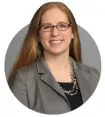During our recent "New California Paid Sick Leave Rules for 2024," webinar, we received several questions about California's paid sick leave ("PSL") requirements. We decided to share the answers to the most common ones with our loyal blog readers. Enjoy!
Q: If we front load 40 PSL hours every January 1st, are we subject to any other accrual or carry-over requirements per year?
A: No. A "front loading" policy makes the full amount of PSL for the year available immediately at the beginning of a 12-month period (except for new hires when the full PSL must be available for use by the 120th day of employment). There is no accrual or carry-over with a front load plan.
Q: What rate of pay do we use to pay employees' PSL if their wages include commissions and a base hourly rate?
A: You must pay sick leave at an employee's "regular rate of pay" (which includes commissions), either for the workweek in which the paid sick leave was taken, or as determined by averaging over a 90-day period. The regular rate of pay is the same rate of pay used to calculate overtime wages. The 90-day "lookback" rate is calculated by dividing the employee's total wages, not including overtime premium pay, by the employee's total hours worked in the full pay periods of the prior 90 days of employment.
The PSL rate for exempt employees is calculated in the same manner that you calculate wages for other forms of paid leave time.
Q: How do I learn more about how to calculate the "regular rate of pay"?
A: The California Division of Labor Standards Enforcement provides FAQs and other information about how to calculate the regular rate of pay for overtime (which is the same for PSL), including examples. If you are still confused (understandable!), contact your trusty employment lawyer.
Q: If we use the front load method, and an employee is rehired within the current year, do we have to reset and give the employee the full amount of leave for the current year?
A: No. If an employee is rehired within one year from the date of separation, the employer must reinstate accrued and unused PSL. The employee will be entitled to use any previously unused PSL upon rehiring, and then receive the full amount of PSL on the next "front load" date.
Q: Our employees have an alternative work schedule of four 10-hour days each week. Are they entitled to 40 or 50 hours of PSL per year?
A: Effective January 1, 2024, employees are entitled to "40 hours or five days" of PSL, whichever is more. Employees with 10-hour workdays are entitled to "five days," or 50 hours, of PSL per year. (DLSE Opinion Letter 2015.08.07.)
Q: Do we need to allow employees to use PSL for bereavement?
A: Yes. An employee may use vacation, personal leave, accrued and available sick leave, or compensatory time off that is otherwise available to the employee during bereavement leave. Remember, bereavement leave is now mandatory for California employees. (Cal. Gov. Code § 1295.7(e)(2).)
The content of this article is intended to provide a general guide to the subject matter. Specialist advice should be sought about your specific circumstances.
We operate a free-to-view policy, asking only that you register in order to read all of our content. Please login or register to view the rest of this article.



